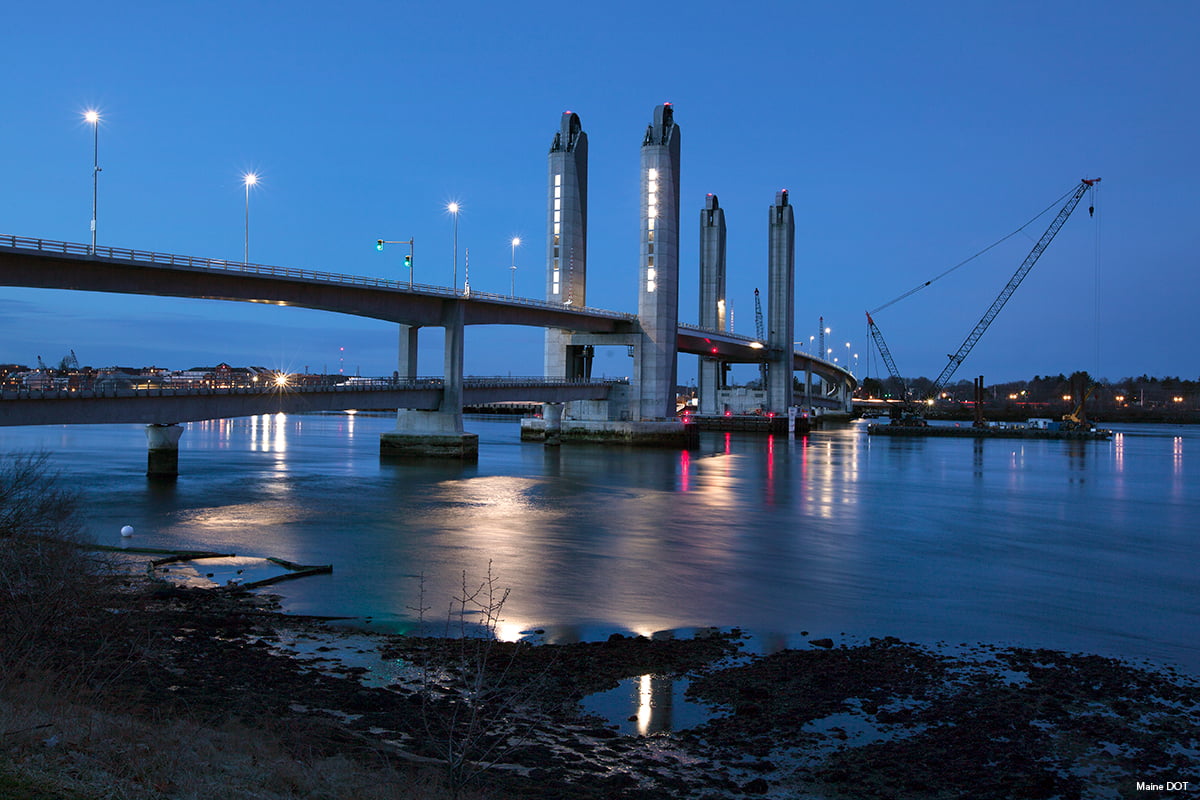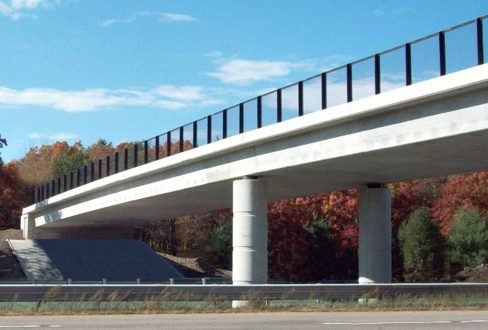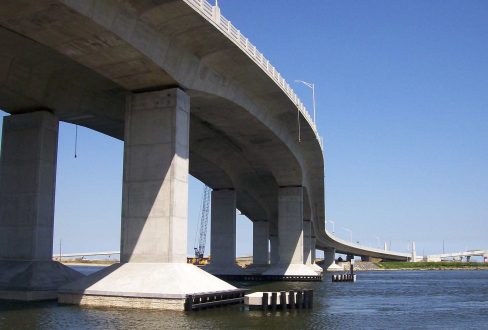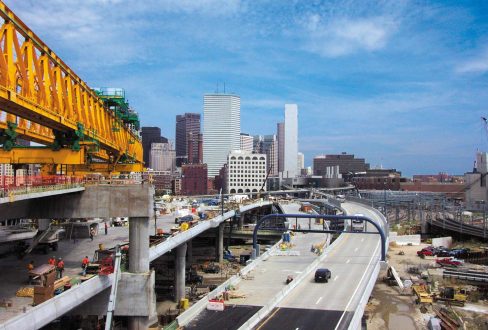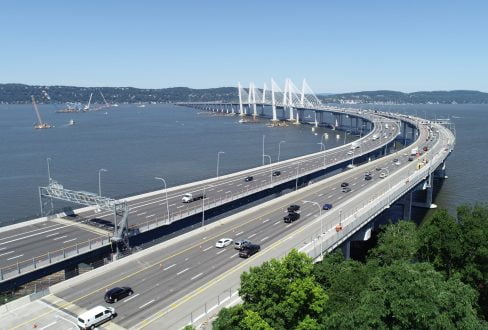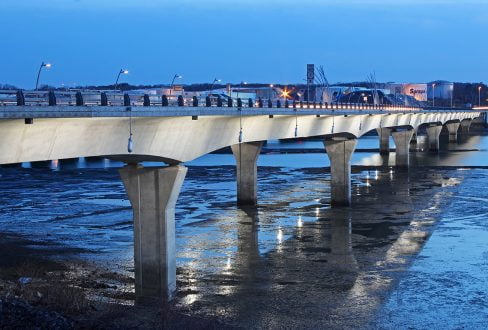When the Sarah Mildred Long Bridge in Kittery, Maine, got stuck in a raised position on August 23, 2016, Maine DOT and its designers were nearing the final phase of construction on a $170 million replacement structure. The design, which incorporates four separate concrete lift towers, is the first of its kind in the United States. Connecting Portsmouth, New Hampshire, to Kittery, Maine, via the Route 1 Bypass, the Bridge carries 14,000 vehicles a day.
The new two-level structure features an upper level that carries vehicles while the lower level provides rail access and includes a 300-ft-long movable lift span supported by four 194-ft-tall concrete lift towers.
The Piscataqua is one of the swiftest rivers in the country. The depth and speed of the water precluded traditional foundation construction methods. In the fall of 2014, construction began with installation of work trestles in the river to provide access for drilling and concrete placement of drilled shafts for all the foundations. An innovative precast segmental concrete structure for the lift tower foundation and shared pier foundations were developed by Unistress and quickly erected to minimize the exposure of workers to the harsh conditions.
Two temporary trestle bridges and construction staging areas were installed on each side of the Piscataqua, providing a stable base for drilling operations that anchored piers into bedrock. “The trestles were more stable than a barge, and allowed work to continue during the 10-foot tide cycles,” described Project Manager Kaven Philbrook. That stability was critical for operating 250-ton cranes.
Unistress was undeterred by the challenging conditions. The singular project and dual-purpose structure opened to traffic in March 2018.
Challenge
Construction of the Sarah Mildred Long Bridge presented many challenges including construction of concrete piers within a high flow tidal zone; construction of precast concrete segments for the lift span tower, which is a first of its kind application; fabrication and float-in of lift span.
Solution
“A site for casting concrete segments adjacent to the bridge became available, making precast construction the best option for the towers,” Philbrook said.
Role of Design Assist
Understanding the risks involved in the construction process and addressing those risks during the engineering and design phase ultimately saved on construction time and costs.
It was a very challenging site.

